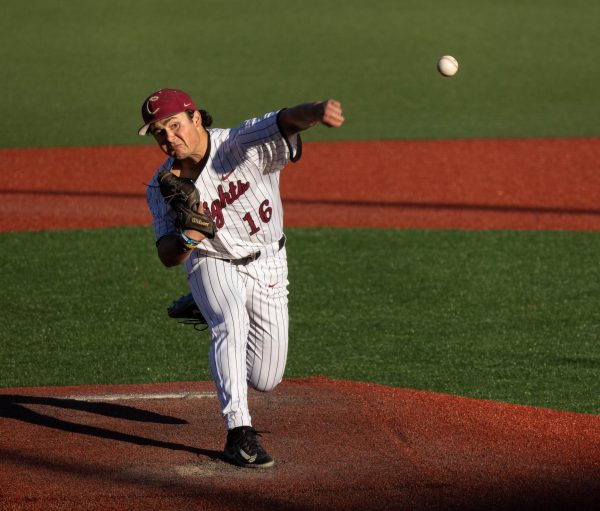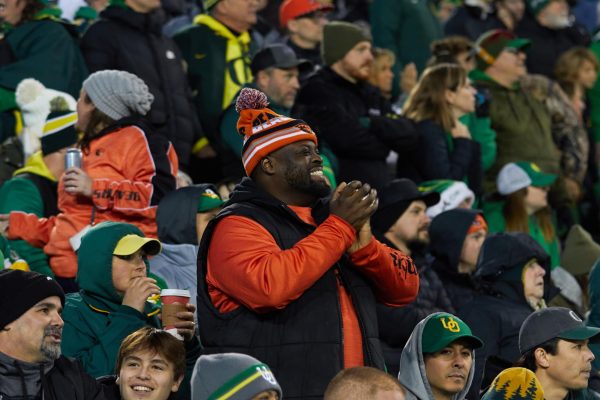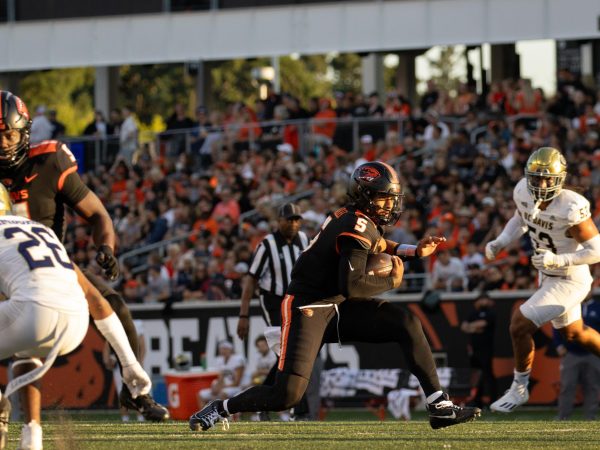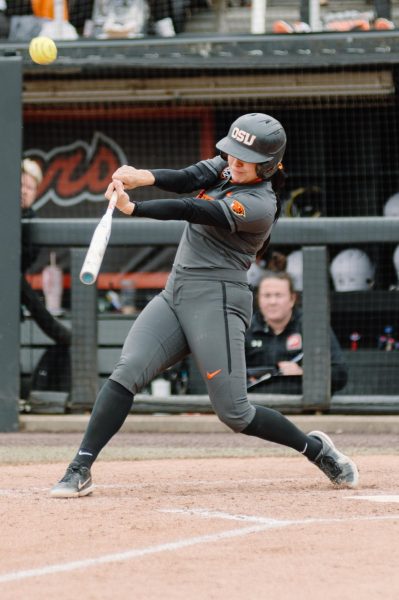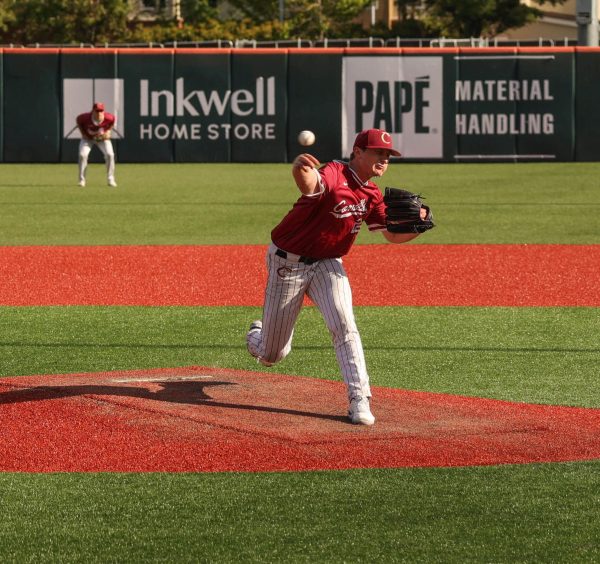Sports Breakdown: Golf
April 21, 2020
Maybe you’ve heard of it as a “gentleman’s game,” and if not that, you have likely heard of Tiger Woods, Michelle Wie, or The Masters. However you know it, the sport of golf draws interest for people from many backgrounds.
The Masters would have been played in April and is arguably the sport’s most popular week with its rich tradition and history. Since The Masters has been rescheduled until November, along with the rest of the sporting world, this could be the perfect time for sports fans to brush up on their golf wisdom and knowledge.
This precision sport has been around for centuries as the modern game began in 15th century Scotland. As the game has developed and years have gone by since, the sport is played with various clubs and a ball. The objective of golf is to hit the ball into the hole in as few shots–known as strokes–as possible.
The hole is set up with a flagstick in it, and a normal golf course stretches out for 18 total holes, being split with a front nine and back nine. These two nines are important to differentiate because they may vary in length and set up.The full 18-hole round being can be viewed as two separate rounds in a way.
While there are 18 holes, each hole has a set par, which is the athlete’s objective to score. For example, there are normally three separate stages of par: par threes, par fours, and par fives. The larger the number, the longer the range for the hole and vice versa. These holes are measured in yards, and every hole has different tee boxes depending on your skill level or age. The choice of which tee box to play off of is up to the athlete, but playing from different tee boxes can make the round more difficult and long, or shorter.
One of the compelling details of golf is that any age and any skill level can play and enjoy the game. There are also driving ranges, which is a range set up for players to hone in on and improve their game at all times without having to pay for a full round of golf.
Golf is a game of the mind with swing components and the need for patience. As the well respected, late professional golfer Arnold Palmer said it best, “Golf is deceptively simple and endlessly complicated; it satisfies the soul and frustrates the intellect. It is at the same time rewarding and maddening- and it is without a doubt the greatest game mankind has ever invented.”
As with many sports, players will continue to learn more about it the longer they play. However much golf may continue to fizzle and frustrate, that one good shot or experience will keep you coming back for more.
Glossary:
Golf may appear to be full of rules, stigma, and boredom. This is not the case if rules are understood and players give it a chance at a reasonable pace. Whether from Wii golf, or from being just a recreational player trying to get into the game, there are helpful and possibly familiar common golf slang terms.The golf clubs are listed in order of when to use, and the distance they travel after being struck.
Tee Box: The box in which to tee off to begin the hole and for a player to shoot off of.
Fairway: The short cut grass area that is situated in front of the tee box where the player attempts to hit for an easier shot to the hole.
Rough: The grass just off the fairway that lines the outside of the fairway. This grass is cut to a longer length to create more difficulty and variabilities of where the ball may go after being struck.
Green: The tightly mowed area where the flagstick and hole sit. A player’s intentions should be to hit it here.
Par: The number that the player is shooting for on the hole. If the player goes one over it, then they are one over par. If the player goes one under it, then they are one under par.
Birdie: When the player shoots one under par for the hole. This is really good.
Eagle: When the player shoots two under par for the hole. This is really, really good.
Hole in one: This is pretty self-explanatory. Get this and a player will be in a pretty good mood for a while.
Hazard: Lined by red stakes. This can be a water area, waste spot, tall grass or native area where a player may hit the ball out of as long as they do not ground their club on the surface. If they find their ball and do not want to hit it in the hazar, or they lose their ball, then a player may drop from the area it crossed from the red stakes and take a one stroke penalty.
Out of Bounds: If a player hits it out, they must re-tee or re-hit from the spot they previously shot from and add two strokes to their score on the hole.
Bunker/Sand: This is a sand area. A player may not ground your club in this area, which creates a challenging shot to successfully achieve.
Driver: This club will most often be hit from the tee box where the hole begins. When hitting with this club, a player will want to tee it up with a golf tee because of its large face.
Fairway Wood: This club may be opted to hit off the tee or off the ground. This is because it has a slightly smaller face of surface area than the driver and slightly higher launch angle.
Hybrid: A newer club by golf standards that has a mixed club face between an iron and fairway wood.
Irons: These clubs differ based on length in the shaft and the angle degree for which the club face is when addressed on the ball. There are 9 irons through 1 irons, with 9 irons traveling the shortest distance and vice versa. The typical golf set has 9-3 irons.
Wedge: This club is used when hitting closer to the green for chipping and is all about the degree of launch. This is easily one of the hardest parts of the game. There are pitching wedges, which travel a little further and will launch lower, while a sand wedge or lob wedge will go a little higher and are required for shorter shots.
Putter: As the saying goes, “Drive for show, putt for doe,” meaning it all comes down to the green. The putter is used on the green, which is a flat surface in which a player tries to “tapppp it in” the hole.
Golf Ball: A (usually) white and round ball with dimples to help with distance, trajectory and grip when being hit by a club.
Role Model Golfers:
Annika Sorenstam (retired): Swedish, regarded as arguably the greatest women’s golfer of all time, dominating the sport in the late 1990’s and early 2000’s. Broke barriers, becoming the first woman to play in a PGA Tour tournament since 1945.
Michelle Wie: Popularized women’s golf in early 2000’s, breaking records at an early age, playing in a professional tournament at 14 years old and played in men’s Sony Open on the PGA Tour in her hometown of Honolulu, HA at the remarkable age of 16 years old.
Tiger Woods: Transcended the sport’s popularity through race, athleticism, and charisma. Winner of 15 majors, including the 2019 Masters.
Jack Nicklaus (retired): American noted as arguably male game’s greatest player, winner of 18 majors.
Ellie Slama: OSU women’s golfer, senior, qualified for first ever Augusta National Women’s Amateur.
Spencer Tibbits: OSU men’s golfer, senior, qualified for 2019 United States Open.
Public Golf Courses Open:
Get outside and enjoy that beautiful Corvallis sun in a safe and smart way! Check on golf courses websites for updates and regulations regarding COVID-19.
Trysting Tree Golf Course: One of the best public courses and deals you can find in the state with18 holes, stretching up to 7,000 yards. Home of the OSU beavers golf teams.
OGA Golf Course: Located in Woodburn, Ore., just north of Corvallis on I-5 about 45 minutes. Home of public golf in Oregon with a great price and play.
Golf City Par 3, Golf City Course: Just off of NE Highway 20, this is a family friendly par 3 (short) golf course in Corvallis.
Diamond Woods Golf Course: Monroe, Ore. about 16 miles outside of Corvallis. Course stretches to just over 7,000 yards and 18 holes.















































































































